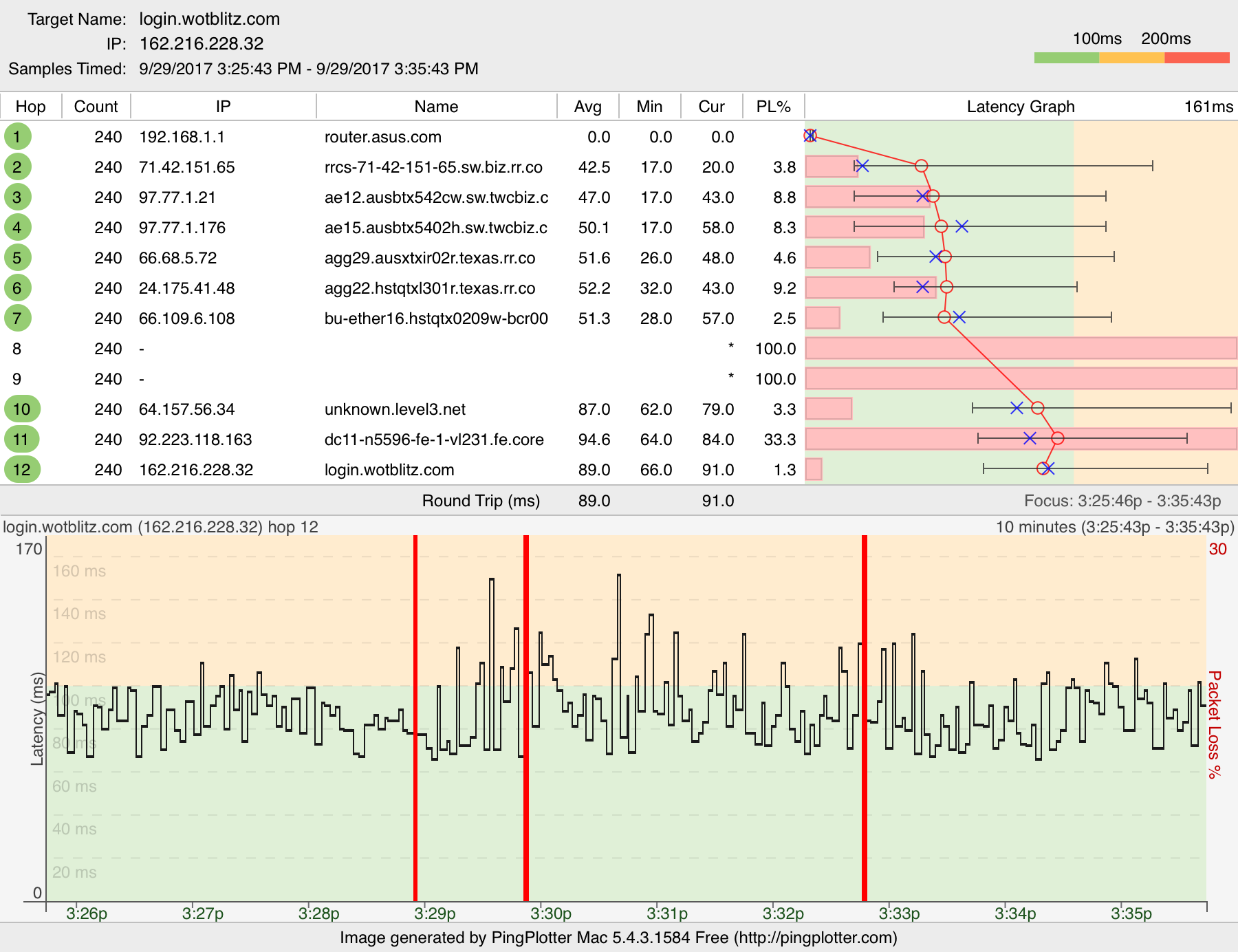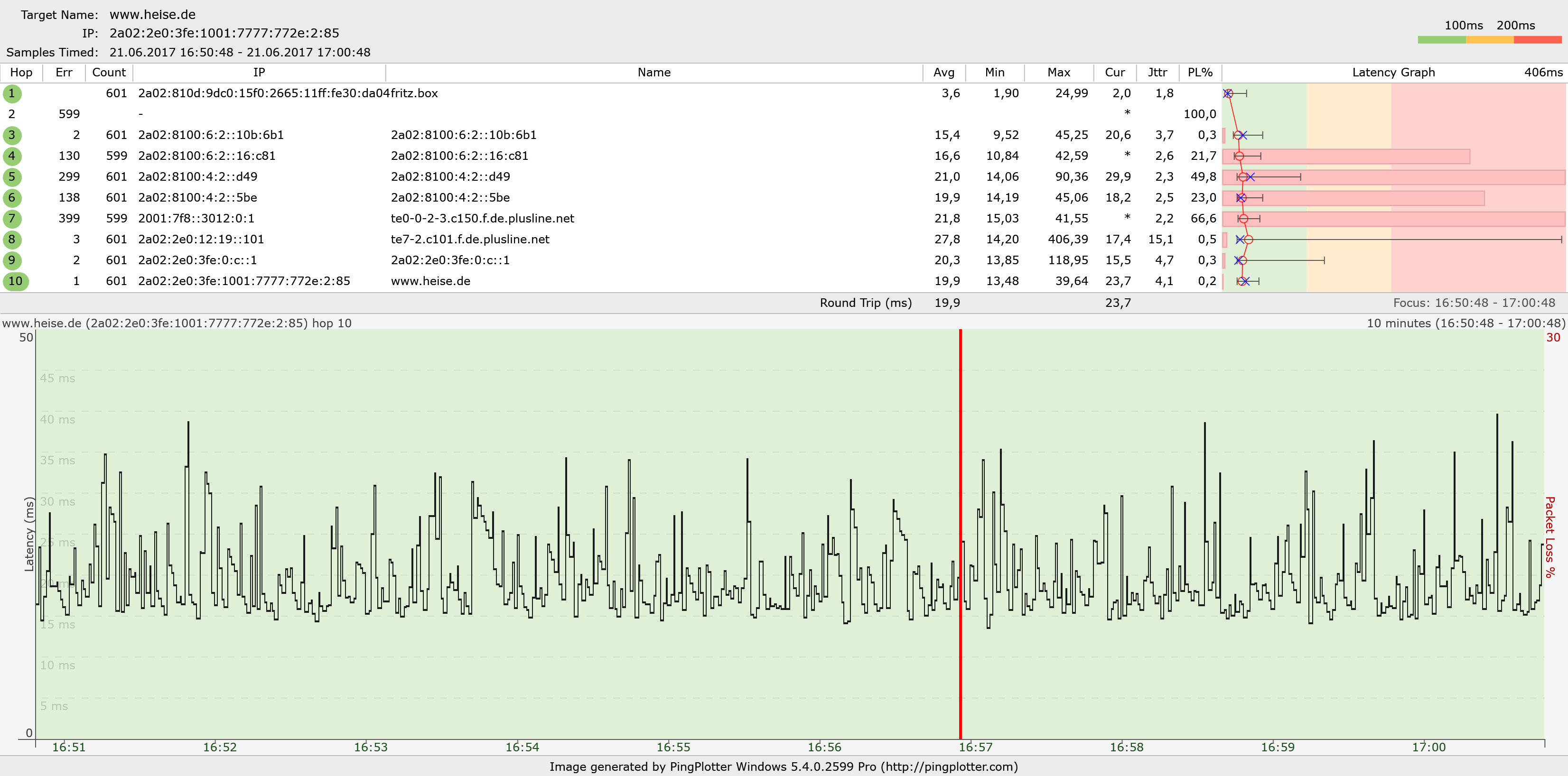

At gigabit speeds, the digital signal is chopped at high speed. Interference, aka noise (non-information signals), on the transmission line manifests itself as missed transitions from 0 to 1 or from 1 to 0.

Not that I would ever question the collective wisdom of Meraki, but I am somewhat skeptical of this claim. No jitter, packet loss, or latency was detected on these lines. This path to the data center has been consistently tested. Yes, all VOIP traffic is being routed to the Mitel cloud data center, in order to make phone calls. As such engineering reported that VLANS are not necessary. The office contains 5 low bandwidth employees, and is consistently operating well below threshold. Meraki confirmed that our network is not overloaded.
#Pingplotter reliable free#
Our entire network is free from allĬRC align errors, Fragments, or Collision errors. Meraki confirmed that none of their technology can measure errors resulting from EMI. Meraki technical support confirmed that EMI would not result in CRC align errors, Fragments, or Collision errors. TCP is a higher priority protocol than ICMP.

Testing PingPlotter with TCP, as well as ICMP, both results in latency spikes. Have you vlaned your network? Are you routing all traffic to a single point and then back again? Is your router being overwhelmed? If you see latency parked right at the edge, you can assume that the wiring isn't an issue. Simultaneously, run them from the furthest point in your network.
#Pingplotter reliable Pc#
Put the PC with PingPlotter right next to the edge device. How do you determine if the wiring is a problem? Eliminate the wiring. I realize that you're using PingPlotter, but just wanted to mention that ping is not reliable when the target is a network component. Otherwise, a ping flood would lock up a switch or router. Switches and routers prioritize icmp traffic as the lowest possible. Ping is a terrible tool for measuring link speed. But any VOIP network should function fine (at baseline) at Fast Ethernet speeds. Nothing makes the frames move more slowly - except a drop in speed. Your infrastructure should be able to show you statistics on malformed frames. If it's not intact, it's going to be retransmitted. In other words, frames traveling across your network are going to arrive either intact or not. I've tried to untangle the visible cable I've found, but no results.ĮMI (electromagnetic interference) can only destroy information it can't slow it down. The punchdown panel in the closet is hastily mounted on wobbly wood. Some of the (Riser) Ethernet cable is terminated directly to Ethernet plugs. Wrapped around power cables, and crooked punch downs. Highest points are in excess of 250ms, from computer to first hop (router) NOTE: PingPlotter results don't show the true highs. Using Meraki m圆4w router, & ms225-24 switch. Have you ever seen results such as this, or know what could be causing them? What would you do? One of our managers owns the building, so if I ask him to spend thousands getting the building rewired, I need to be sure. After talking to Meraki’s support, they admit that most networking tools cannot detect EMI. No collisions, CRC errors, or any errors reported.

But, I’m not seeing any layer 1 (cable) errors, using the Meraki’s cabling tools. The building probably has the worst cabling job I’ve ever seen. After approximately 60 hours of my own troubleshooting and testing, I’m considering that the cabling, or EMI, is the issue. PingPlotter uses a combination of ICMP, TCP, UDP protocols to detect latency. We see very pronounced latency to the Router, first hop after switch, using Ping Plotter. All offices use similar Meraki equipment and were configured and rechecked by network engineers as being best practice according to our phone company, and Meraki. How do I determine if our issues are caused by bad cabling or EMI, when all network cabling tests are clean? Learn the basics behind low latency streaming.One of our offices has consistent issues with VOIP call quality. Read our article on Internet Speed for Video Streaming to learn more in-depth about how the PingPlotter Service with StreamGuys can help with testing for latency. Part of doing this is to test site performance under high latency conditions to optimize for consumers with poor internet connections. When it comes to performance optimization, it's critical to optimize for latency reduction. The Difference Between High and Low Latency.To do so quickly and reliably, the streaming provider must align a few principles and technologies. In Latency, Streaming, Technology on May 24, 2022ĭigitization at a faster and faster pace has made streaming the most popular means of monetizing content, growing audiences, and keeping ahead of trends. What Causes Video Streaming to Slow Down?.


 0 kommentar(er)
0 kommentar(er)
